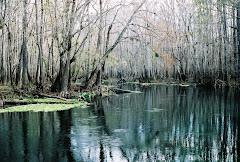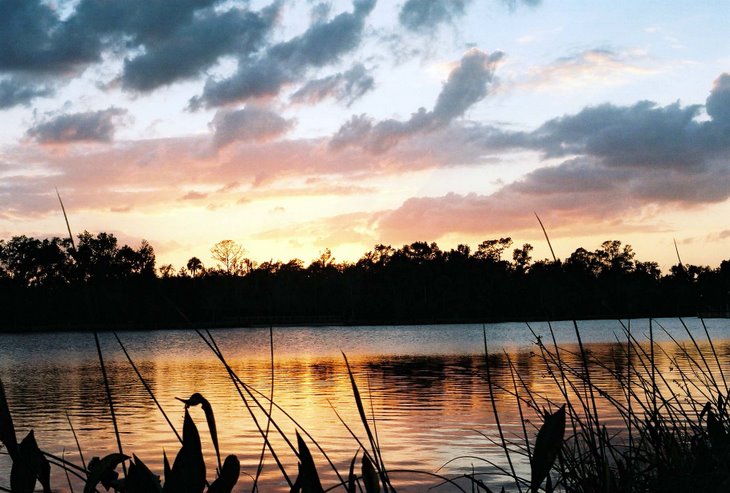This park had somehow passed under my radar screen until today, when I suggested that we incorporate a visit there while on a trip to run errands in nearby Panama City. I had always viewed St. Andrews State Park as recreational in its orientation with a busy public beach, large campground and extensive facilities for boating and fishing. Well that all turned out to be true but this park also contains an untamed side where one can see wildlife up close through a nifty network of trails that penetrates into a surprisingly diverse set of terrains and habitats.
 The beach and jetty
The beach and jetty
Known throughout the Panhandle for its sugar white sands and emerald green waters, this 1260 acre preserve, which is a former military reservation, has over one-and-a-half miles of beach front on the Gulf of Mexico and Grand Lagoon and is located a scant three miles from Panama City.
Red-Winged Blackbird (Agelaius phoniceus)
 Gator Lake Trail
Gator Lake Trail
The two most visited parts of the park are the beach on the Gulf of Mexico which is protected by a jetty and the bay frontage on the Grand Lagoon with boat ramps, docks and picnic areas. The park's more remote uplands are characterized by rolling white sand dunes separated by low swales of either pine flat woods or marshes. Dunes covered with sea oats abound. Dunes found farther inland are covered with sand pines, scrub oaks, rosemary and other hardy plants that play an important role in preventing erosion during intense storms and hurricanes. This lesser visited part of St. Andrews is where you'll find the wildlife.
 American Alligator (Alligator mississipiensis)
American Alligator (Alligator mississipiensis)
 Common Egret (Casmerodius albus)
Common Egret (Casmerodius albus)
 Oak hammock with palmetto
Oak hammock with palmetto
One of the interesting highlights of the park is the Gator Lake Trail which traverses several different ecosystems and affords an opportunity to observe a variety of animals including many species of birds, mammals and of course alligators. The pond itself reminded me a lot of peninsular Florida with it's egrets, herons and reptilian swamp life. Be careful when you hike this trail because it takes you right up close and personal to where the gators live. Watch out for snakes too.
 Brown Pelican (Pelecanus occidentalis)
Brown Pelican (Pelecanus occidentalis) An alligator in Gator Lake, of course.
An alligator in Gator Lake, of course.
For more information:
http://www.floridastateparks.org/standrews/default.cfm


 Oak hammock with palmetto
Oak hammock with palmetto













